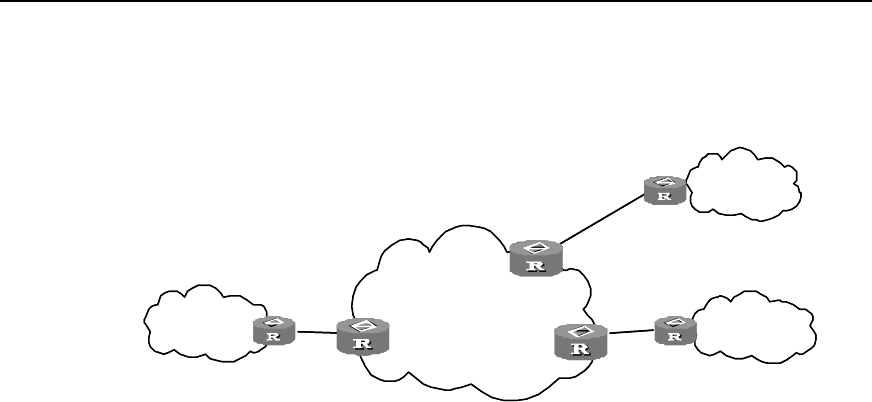
3Com Switch 8800 Configuration Guide Chapter 35 MPLS Architecture
35-9
there are obvious advantages to implement VPN by MPLS. MPLS VPN connects the
geographically different branches of private network by using LSP, forming a united
network. MPLS VPN also supports the interconnection between different VPNs.
Priv ate
network branch 2
Private
network branch 1
Backbone network
Priv ate
network branch 3
CE1 PE1
PE3
CE3
PE2
CE2
Priv ate
network branch 2
Private
network branch 1
Backbone network
Priv ate
network branch 3
CE1 PE1
PE3
CE3
PE2
CE2
Figure 35-6 MPLS-Based VPN
The basic structure of MPLS-based VPN is shown in
Figure 35-6. CE is the customer
edge device, and it may either be a router or a switch, or perhaps a host. PE is a service
provider edge router, which is located on the backbone network. PE is responsible for
the management of VPN customers, establishing LSP connection between various
PEs, route allocation among different branches of the same VPN customer.
Usually the route allocation between PEs is realized by using extended BGP. MPLS
VPN supports the IP address multiplexing between different branches and the
interconnection between different VPNs. Compared with traditional route, it is
necessary to add branch and VPN identifier information in VPN route. So, it is
necessary to extend BGP so as to carry VPN routing information.


















